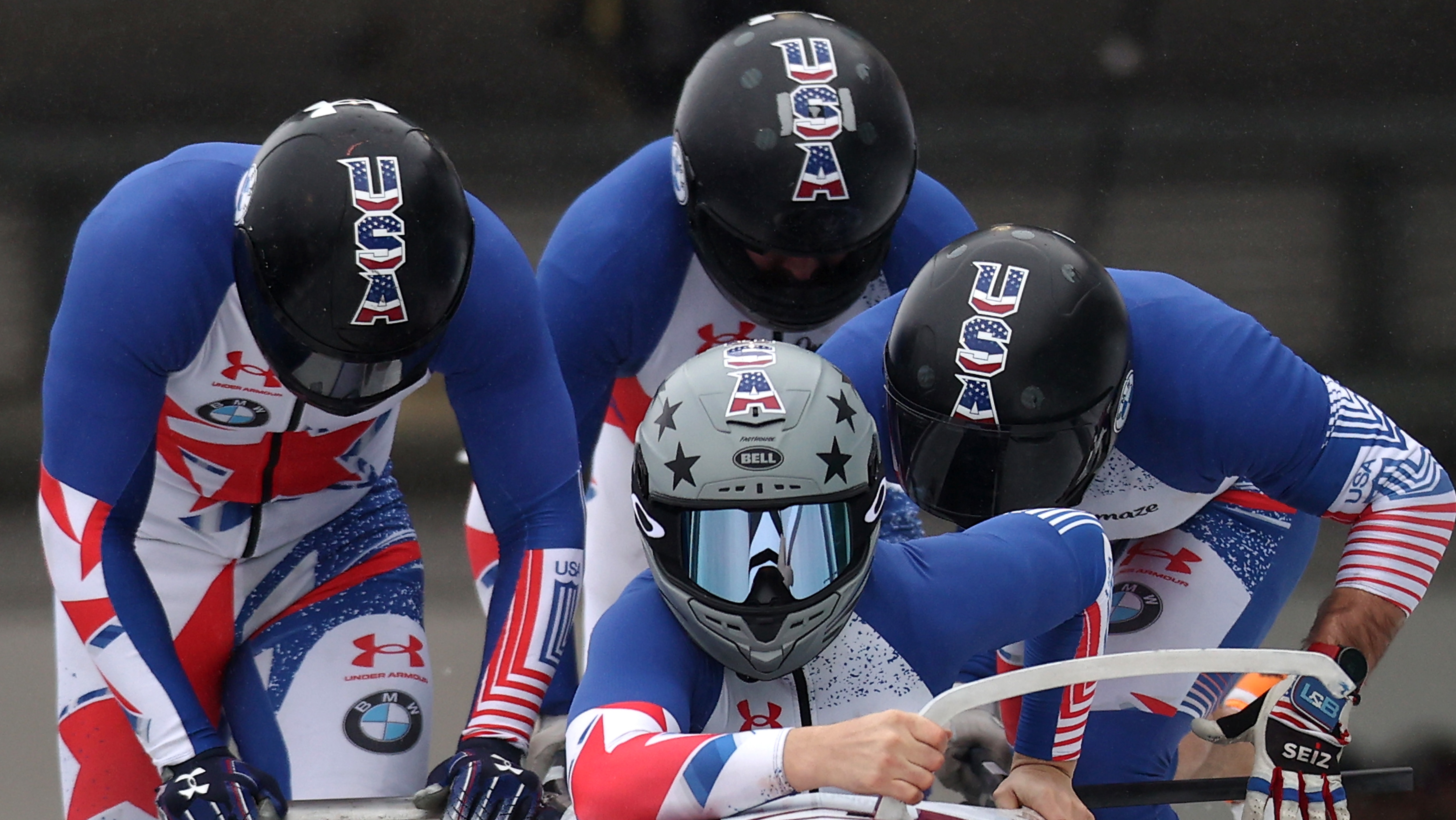Team USA’s strong Monday at the Winter Olympics in Beijing was capped off by Kaillie Humphries and Elana Meyers Taylor taking gold and silver in the women’s monobob.
The American duo will return to the track Tuesday at 1:10 a.m. ET for the two-women race. So how does this sport — which returns to American television screens every four years — work?
Here’s what you need to know:
How do you steer a bobsled?
Get top local stories in Philly delivered to you every morning. Sign up for NBC Philadelphia's News Headlines newsletter.
Steering a bobsled boils down to the pilot managing a system of two ropes that connect to steel runners.
The runners are metal blades that serve as the primary point of contact between the sled and the track. These runners are regulated to remain within a specific temperature range heading into competition because warmer surface temperatures lead to reduced friction and increased speed.
How much does a bobsled weigh?
It’s simple physics — accelerating down a track requires significant weight and that starts with the sled itself.
There are weight thresholds with each event that establish a minimum without athletes and a maximum that includes the athletes’ weight. If crews fall short of the maximum weight, they’re permitted to add ballast to the sled directly but not the competitors themselves.
So how much does the sled actually weigh? Around 400 pounds.
A two-person sled weighs in at around 375 pounds while the four-person sled averages just over 400 pounds. The monobob, an event that made its Olympic debut in Beijing, is the lightest of the three sleds at a mere 365 pounds.
How does bobsledding work?
Bobsledding typically involves a pilot and brakeman, with any additional athletes — as in the case of the four-man event — designated push.
In all events, athletes take off by pushing the sled at full speed before leaping into the sled in a strategic order. The athlete at the front, known as the pilot, is charged with steering the sled using the rope pulley system. Meanwhile, the athletes in the back are responsible for pulling the brake only after completing the run. Any additional athletes typically try to maintain a low center of gravity within the sled and shift their weight to help steer.
Due to the unique combination of speed and strength required for bobsledding, it’s not uncommon for athletes of other sports — namely track and field — to try bobsledding.
The aptly named monobob requires athletes to shoulder all responsibilities within the sled.
How fast do bobsleds go?
At speeds exceeding 90 mph, bobsledding is not for the faint of heart.
Alongside luge and skeleton, bobsled is one of three sledding sports that give the Winter Olympics the reputation of being relatively dangerous compared to the Summer Games. All three sports reach impressively high speeds, but bobsledding is generally believed to be the fastest of the three, only marginally ahead of luge.
What does the inside of a bobsled look like?
For all the eye-popping external features that make up the pill-shaped sleds, the inside is actually rather simple, primarily consisting of ropes used for steering and brakes.
How much does a bobsled cost?
If the weight of the sleds hasn’t discouraged you from taking up bobsledding, the cost most certainly will.
An Olympic-sized bobsled starts around $30,000, with some reports indicating sleds can run up to $100,000 depending on the design. In Vancouver, Team USA’s sleds cost about $50,000.
The women’s monobob was introduced as a means of increasing access and participation of smaller countries. In addition to only requiring one athlete, the sled’s $15,000 sticker price is considerably lower than the two- and four-person sleds.





